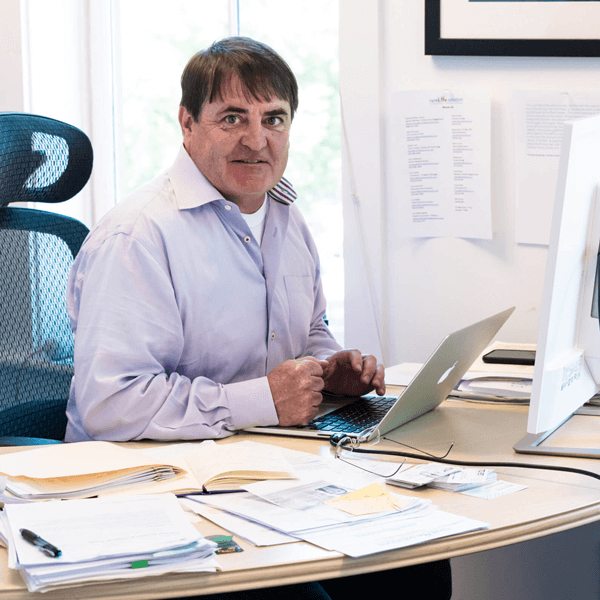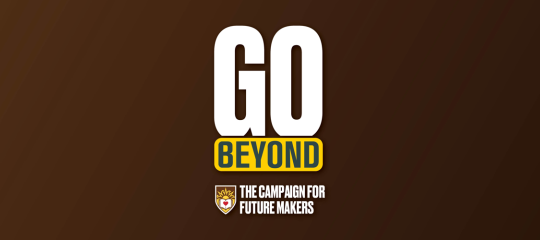Dan Donovan ’86
Founder and CEO, rareLife Solutions, Inc.
B.S. Finance
Solving problems in the rare disease space
Dan Donovan ’86 has been a problem solver within the pharmaceutical industry, as well as on the service side of the industry, for his entire career. But his focus now is both passionate and personal as founder and CEO of rareLife Solutions, Inc., a company that seeks to improve processes and lives by partnering with industry to address an underserved population — people with rare diseases.
Donovan worked as the European director for Pfizer’s cardiovascular portfolio before starting his own company, Envision Pharma, to help life science companies and their academic partners publish medical research. He created a software solution, dataVision, to get critical data to physicians in a compliant and transparent manner, which became the industry standard. He later sold Envision and entered the rare disease space initially as an investor and board member.
Making it new: Fixing a broken system
“I saw how fractured the whole rare disease ecosystem was and thought, ‘There’s got to be a better way to help these patients and their families who are struggling,’ ” Donovan says. He had an idea for a new software and service model that could help in the rare disease space, and that was the genesis of rareLife.
“We work with pharmaceutical companies to help them develop and commercialize drugs for rare diseases in a smarter, more efficient, less expensive way. Everything in rare is different, so there needs to be a very different approach,” Donovan says. “In rare, the patient, caregivers, and advocates are the market shapers. Companies need to integrate them every step of the way to achieve maximum success with their products. That’s what we do — we work with them to incorporate the community into the process.”
Making a difference: Helping patients struggling with rare diseases
In rare diseases, patients experience an average delay of six years from the onset of symptoms to receiving an accurate diagnosis, often being treated for conditions they don’t have while their actual condition progresses. Meanwhile, pharma and biotech companies working in rare diseases have difficulty finding patients to serve as advisers or to participate in trials or as candidates for approved therapies.
RareLife’s solutions help find patients with rare diseases, engage them to strengthen their community and advance understanding of the disease. In addition, they educate health care providers to make them better equipped to diagnose and treat patients.

“The definition of rare in the U.S. is 200,000 or fewer patients. So we think about things like hyper-targeting and reaching physicians in academic centers who actually have expertise in this area,” Donovan says. “We work to figure out how to find those patients and help companies get those patients into their clinical trials, because they’re few and far between.”
The company works across 50 to 60 rare diseases. “Some of them people have heard of, like sickle cell disease, Wilson’s disease, and neuroblastoma, which is a childhood cancer. Around 50% of rare diseases affect children, and, sadly, 30% of those kids won’t live to see their fifth birthday. So there’s an urgency for treatments in a hugely underserved population,” Donovan says.
Making it together: For the rareLife team, it’s personal
There are around 7,000 classified rare diseases, yet only about 6% of them have a treatment. So while rareLife’s market potential is huge, for Donovan and his team, their work has a different perspective.
“I’m the carrier of a rare disease,” Donovan says. “My mother was taken from us much too early by a rare form of cancer. And about 75% of my team are impacted personally by rare diseases.”
Donovan says he got to a point in his mother’s rare disease treatment journey where he knew more about the medical literature database than her physicians. “It’s not their fault, it’s that these diseases are rare, and they’re not taught about them in their training.”
RareLife also seeks to educate physicians on rare diseases and the patients who have them. “We work with pharmaceutical companies and academic centers to generate the publications that doctors, payers and the rare disease families themselves read. For some recent papers, we peppered the publications with qualitative responses from community members — the people who have the disease. So instead of a cut-and-dried paper, the physician is learning about the disease from the patient perspective, which they can never get in a 15-minute visit to the office.” He hopes this approach will alter physicians’ understanding of the patients and the way they treat them.
“So it goes beyond market potential. For us, it’s personal, and what we’re doing is incredibly meaningful.”
Get Involved
MAKE THE FUTURE. GO BEYOND.

GO Beyond: The Campaign For Future Makers
How will you be a future maker? Explore ways you can give or engage to support exceptional students, innovative faculty, and the distinctive interdisciplinary education only Lehigh can offer.


